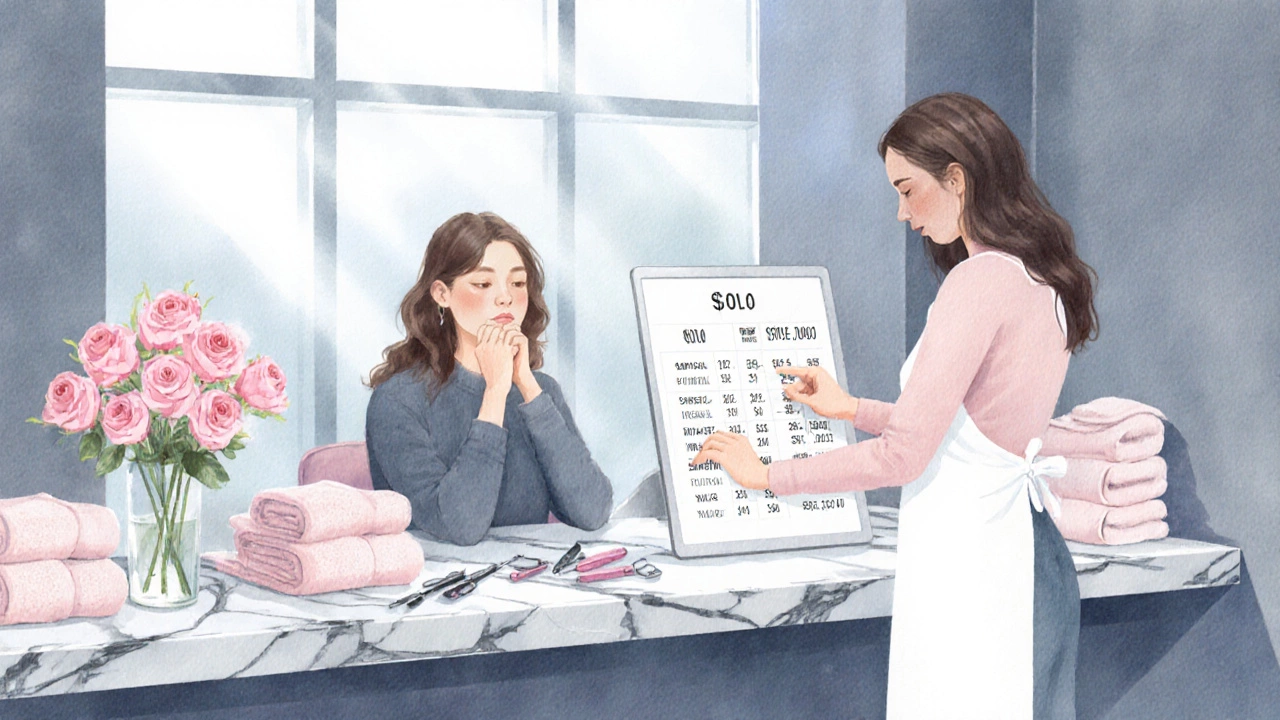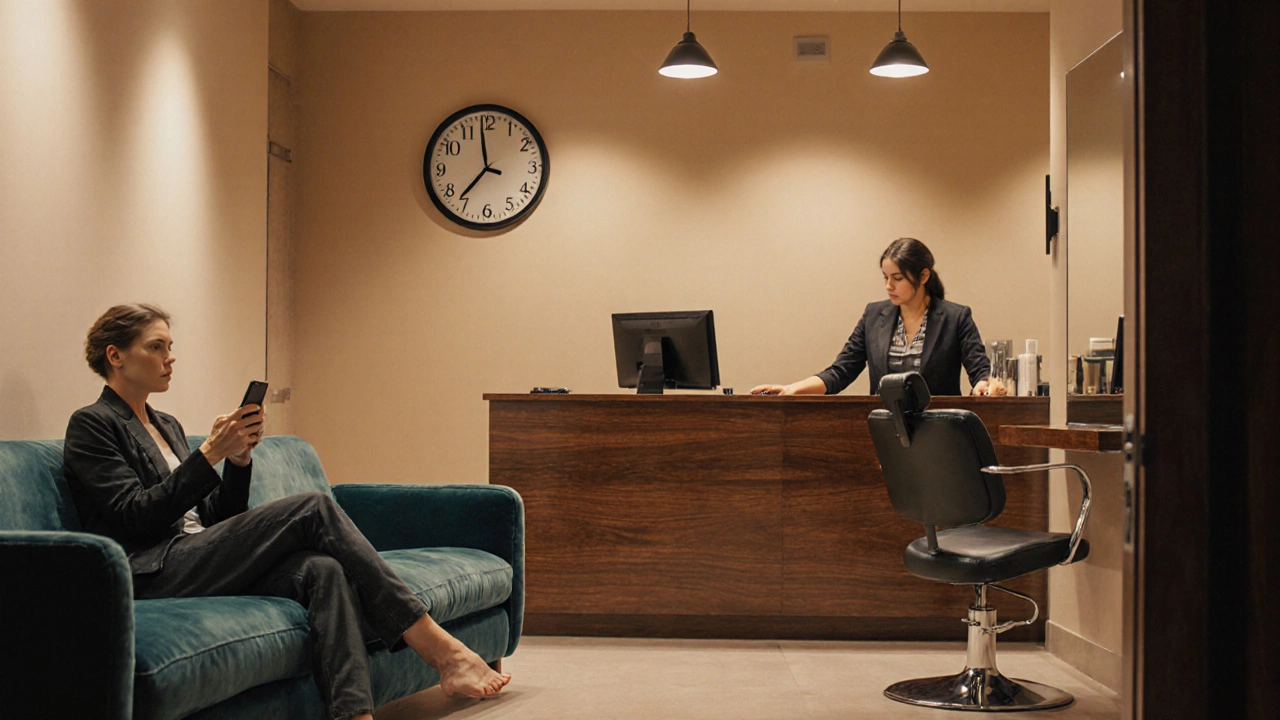Salon Quality Checker
Assess a salon's quality and potential complaint risks before booking. Answer a few simple questions to see if you should be concerned about common salon issues.
Ever left a beauty salon is a service-oriented business that provides hair, nail, skin and cosmetic treatments to clients feeling frustrated? You’re not alone. From missed appointments to lukewarm towels, the list of gripes is surprisingly long, and many of them point to the same underlying gaps in salon operations.
Quick Takeaways
- Scheduling mix‑ups and long wait times top the complaint chart.
- Hidden fees, unclear pricing, and product quality concerns follow close behind.
- Cleanliness, staff professionalism, and communication style are make‑or‑break factors.
- Proactive salons address issues with clear policies, transparent pricing, and real‑time feedback loops.
- Customers can protect themselves by asking the right questions before booking.
Typical Complaint Categories
While every salon has its quirks, complaints tend to cluster into a handful of themes. Understanding these helps both clients and owners spot trouble early.
1. Reservations & Scheduling
The most frequent grumble comes from Appointment scheduling is a system that organizes client bookings and allocates staff time failures. Common scenarios include:
- Double‑booked slots that leave you waiting in the lobby.
- Last‑minute cancellations without a refund option.
- Confusing online calendars that display the wrong date or service.
Clients in Auckland often report that “the book‑it‑online button says 2 pm, but the stylist shows up at 3 pm.” The root cause is usually a lack of real‑time inventory syncing between front‑desk software and the stylist’s personal schedule.
2. Pricing & Transparency
Nothing fuels anger faster than a surprise charge. Pricing transparency is a practice of clearly listing costs before services are rendered is still missing in many local shops. Typical complaints:
- “The haircut was advertised at $45, but I was billed $60 for a “premium finish”.
- Unexplained product mark‑ups added to the final receipt.
- Hidden “service fees” that appear only on the printed invoice.
In New Zealand, the consumer law requires clear price disclosure, yet many salons rely on verbal agreements that are easy to misinterpret.
3. Cleanliness & Hygiene Standards
Clients expect sanitized tools, fresh towels, and a spotless workstation. When a salon falls short, complaints quickly surface:
- Reusable implements that look like they haven’t been sterilized.
- Hair clippings left on the floor after a cut.
- Stale air or lingering chemical odors.
Health authorities in Auckland have issued stricter guidelines after a few high‑profile infection scares, but enforcement remains spotty, leaving customers to judge by observation alone.
4. Service Quality & Staff Professionalism
From a Hair stylist is a professional who cuts, colors, and shapes hair according to client requests who rushes through a cut to the next appointment, to a Nail technician is a trained specialist who performs manicures, pedicures, and nail art who skips a step, the perception of care drops dramatically. Frequent frustrations:
- Style outcomes that don’t match the consultation photos.
- Rude or dismissive responses when clients ask for clarification.
- Inconsistent skill levels between staff members.
When a salon fails to match its advertised portfolio, word spreads fast on local social media groups.
5. Product Quality & Safety
Many customers are wary of the chemicals used during color or keratin treatments. Complaints usually involve:
- Allergic reactions to dyes that weren’t tested.
- Hair breakage after a “smoothening” service.
- Low‑quality products that cause scalp irritation.
Salons that source reputable brands and offer patch tests tend to receive far fewer complaints.
6. Environment & Ambiance
The overall vibe can make or break a repeat visit. Issues often cited include:
- Overly loud music or strong perfume that triggers sensitivities.
- Uncomfortable chairs and poor lighting.
- Lack of privacy for more intimate services like facials.
Small adjustments-like a quieter playlist or dimmable lights-can instantly improve client satisfaction.
Comparison of Common Salon Complaints
| Complaint Category | Typical Impact on Client | Common Root Cause | Suggested Fix |
|---|---|---|---|
| Scheduling errors | Long wait, missed appointments | Outdated booking software | Adopt real‑time calendar integration |
| Hidden fees | Bill shock, distrust | Poor price disclosure | Display full price list online and in‑store |
| Unclean tools | Health risk, discomfort | Lack of sterilization protocol | Implement EPA‑approved disinfection steps |
| Poor service outcome | Unsatisfactory look, repeat visits | Inconsistent staff training | Standardize skill assessments quarterly |
| Product reactions | Allergies, hair damage | Skipping patch tests | Mandatory allergy test before chemical services |
| Unpleasant ambiance | Reduced comfort, short stays | Neglected environment upkeep | Regular ambiance audits (lighting, scent, music) |

How to Handle a Complaint Effectively
When a client raises an issue, the response can either defuse tension or amplify it. Follow these steps:
- Listen without interrupt. Show you’re genuinely hearing the concern.
- Repeat the problem back in your own words to confirm understanding.
- Apologize sincerely, even if the fault isn’t entirely yours.
- Offer a concrete remedy-refund, free touch‑up, or a discount on the next visit.
- Document the incident in a log so patterns can be identified later.
- Follow up after 48 hours to ensure the client feels the issue was resolved.
Salons that keep a simple “complaint ledger” often spot recurring trouble spots (e.g., a particular technician’s timing) before they snowball.
When to Walk Away - Red Flags for Clients
Not every mismatch can be fixed. If you notice any of these signs, it may be time to find a new salon:
- Repeated missed appointments despite confirmed bookings.
- Consistent lack of price clarity-if you can’t get a written quote, expect surprise fees.
- Visible hygiene lapses (used disposable items, dirty tools).
- Staff who disregard your preferences or appear dismissive.
- Negative online reviews that mirror your own concerns.
Trust your gut; a salon should make you feel pampered, not anxious.

Key Takeaway Checklist
- Ask about the booking system and cancellation policy before reserving.
- Request a printed price list that includes any add‑on services.
- Observe the cleanliness of workstations and the condition of tools.
- Confirm that the stylist or technician is certified and experienced in the service you want.
- Take note of the salon’s ambiance-comfort matters.
- If an issue arises, note the response time and solution offered.
Frequently Asked Questions
What should I do if I’m double‑booked?
Contact the salon immediately, ask for the earliest available slot, and request a complimentary add‑on (e.g., a scalp massage) if you have to wait. If they can’t accommodate, ask for a full refund.
How can I verify a salon’s hygiene practices?
Look for visible sterilization stations, ask if they use disposable tools for certain services, and check if the floor and surfaces are wiped down between clients. In New Zealand, reputable salons display a compliance sticker from the local health board.
Are prices required to be shown before treatment?
Yes. Under the Consumer Guarantees Act, businesses must provide clear pricing before a service begins. Ask for a written estimate if the staff only gives a verbal quote.
What’s a safe way to test hair dye for allergies?
Ask the stylist to apply a small amount of the dye on the inner forearm or behind the ear and wait 15‑20 minutes. If redness, itching, or swelling occurs, skip the treatment or choose an alternative brand.
How often should I change my hairstylist?
There’s no set rule, but if you notice repeated miscommunication, declining skill, or frequent scheduling hiccups, it’s a sign to look for a new professional who better matches your expectations.
Being aware of the most common salon complaints lets you pick a place that truly respects your time, money, and comfort. Keep this guide handy next time you book a trim, a manicure, or a facial, and you’ll walk out feeling pampered rather than annoyed.
